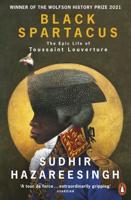Publisher's Synopsis
It was a crisp October afternoon, I stood before the puristic Zoroastrian fire temple in Yazd. The air felt heavy, as if the echoes of Muslim-Arab invasions still lingered, warning of more sorrow to come. Just days earlier, Mahsa Amini, a bright young woman, had fallen victim to the mullahs' oppressive "morality police," her tragic death casting a shadow over the ancient land.
While we were filming for a documentary at the temple, an unexpected moment unfolded: two young Iranian women stepped in front of the camera, removed their hijabs, and raised their hands in a victory sign. Davoud, our tour guide and impromptu cameraman, suddenly stopped filming. Despite his hesitation, I urged him to continue, unaware that this brave protest could spell a death sentence for the women and a prison sentence for us, along with the revocation of Davoud's tour guide license. The gravity of the situation only dawned on me later that night.
As I bid farewell to Davoud and the mesmerizing Zoroastrian fire temple, the earlier incident with the two women and the filming "mishap" quickly faded from my thoughts. Instead, I found myself captivated by the enigmatic figure of Zarathustra. Who was he truly? Was he a mythical figure like Abraham, Moses, or Muhammad, or a real historical personage like Socrates, Confucius, or Buddha? If he did exist, when exactly did he walk the earth-was it truly in an ancient era shrouded in the mists of time, preceding these renowned figures? What were his core principles? Was he a philosopher, a prophet, a visionary, or all of these? These questions swirled in my mind, growing into an even bigger puzzle during the sleepless night that followed.
No land has seen invasion, plunder, and rebirth quite like Iran. Zoroastrian Iran was a glittering prize in the eyes of barbarians and looters, drawing them in like moths to a flame. Iran was the most advanced civilized nation and therefore the most attractive country for plunderers and their raids. That it survives today is due to the resilience and intellectual strength of Iranian scholars who despite the tragedy of invasion instilled in the population the will to hold to what was important. The magnificent palaces and gardens, the complexity of mathematics, astronomy and medicine are a testament to the people who held fast to their faith and teachings. The Zoroastrians never worshipped fire. But they valued what it symbolizes. For them fire was symbol for sublimity, purity and equality before the invisible god Ahura Mazda.
As we entered the Fire Temple on that fateful day, I felt a sense of awe and understood that this was not just a building but a symbol of resilience, a beacon of hope, and a reminder that history, though often painful, shapes who we are today. Imagine, this ancient faith, once thriving across these lands of Central Asia for thousands of years, now almost hidden beneath layers of history and culture. Zoroastrianism was more than just a religion for Iranians. It was a way of life, shaping the very fabric of highly civilized Iran. Zarathustra's teaching of good thoughts, good words and good deeds is in the DNA of Iranians to this very day. This was my heritage, I felt proud and at home.
My old friend and guide Davoud led me to the heart of the temple, where the holy fire blazed within a large bronze furnace, its flames casting a glow upon the faces of the faithful and visitors from all over the world. Behind a glass wall, people gazed in awe at the eternal flame, their hearts filled with reverence for the ancient traditions that had preserved it through the ages.
And then, disaster struck, something that would radically change me. While filming at the temple two young Iranian women stepped in front of the camera, removed their hijabs, and raised their hands in a victory sign. Davoud stopped filming immediately. Despite his hesitation, I urged him to continue, unaware that this bold protest could be death penalty for them!









